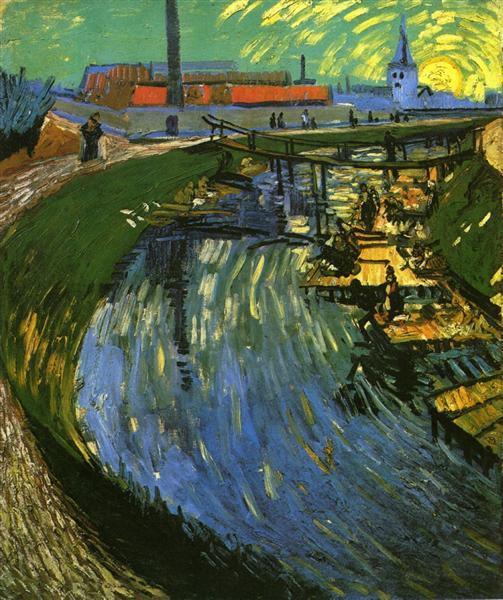Description
The painting "The Roubine Du Roi Canal With Washerwomen" by Vincent Van Gogh is a masterpiece depicting the beauty of nature and everyday life in the countryside. This work was created in 1888, during the artist's stay in Arles, France.
Van Gogh's artistic style is characterized by the use of thick, vibrant brushstrokes, which create a unique texture on the surface of the painting. In "The Roubine Du Roi Canal With Washerwomen", the artist uses this technique to represent the sunlight reflecting on the water of the canal and on the washerwomen's clothing.
The composition of the painting is very interesting, as Van Gogh uses the diagonal of the channel to guide the viewer's gaze towards the bottom of the image. At the center of the painting are the washerwomen, which are depicted in great detail and realism.
Color is another outstanding aspect of this work. Van Gogh uses a palette of bright, saturated colors, which create a feeling of joy and vitality. The blue and green tones of the water and vegetation contrast with the warm tones of the washerwomen's dresses and the sky.
The history of the painting is also very interesting. It is known that Van Gogh was inspired by the daily life of the Provence region, where he was at the time. The image of the canal and the washerwomen was very common in the area, and the artist wanted to capture that beauty in his work.
Lastly, there are some little-known aspects of this painting. For example, it is believed that Van Gogh used a photograph as a reference for the composition of the image. In addition, it is known that the artist gave this work to his friend and colleague, Paul Gauguin, as a sign of their friendship and mutual admiration.

